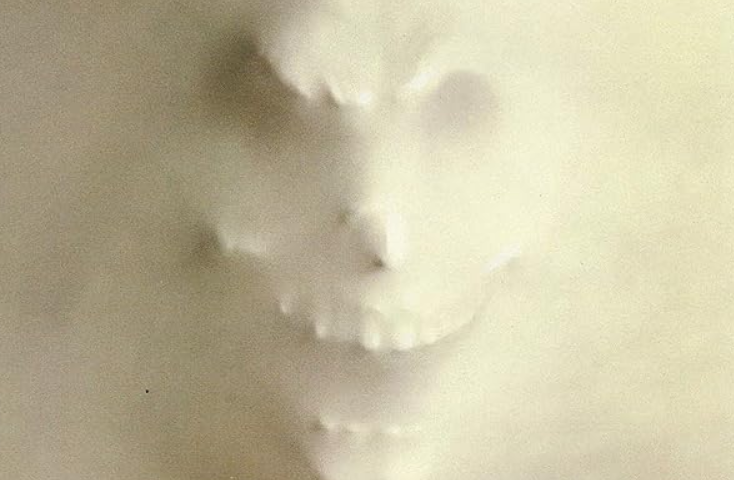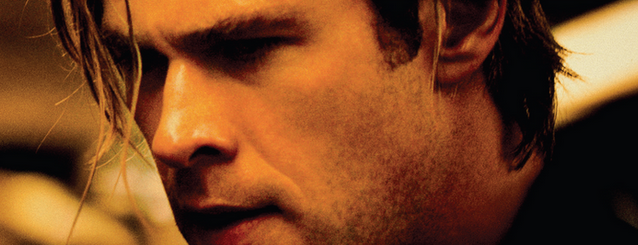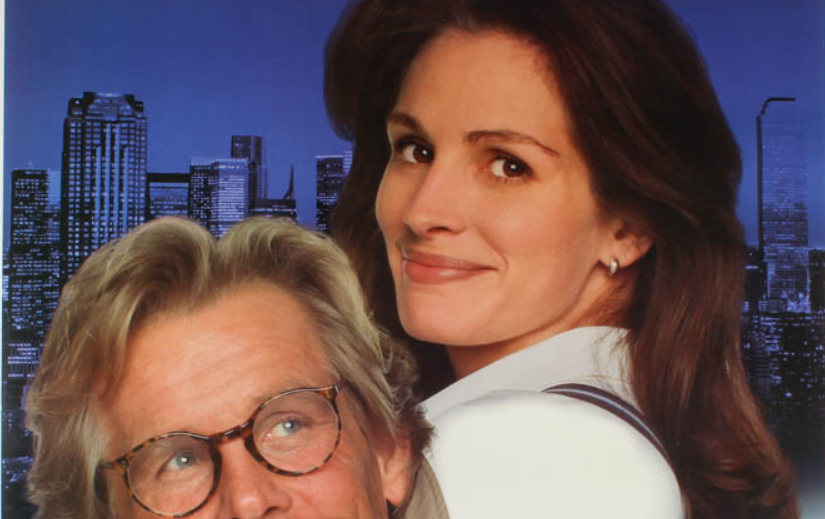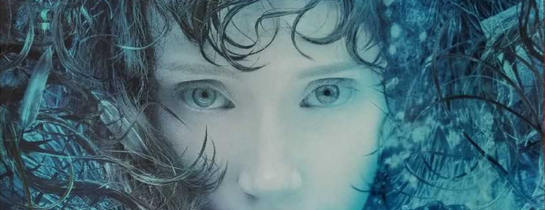Jodie Foster
In between The Accused and Silence of The Lambs, Jodie Foster starred in exactly one film. Dennis Hopper cast her as the female lead in his 1990 project, Catchfire. Or should that be Backtrack?
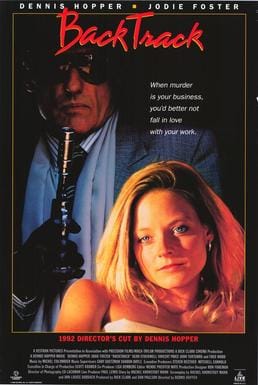
It’s hard to believe Jodie Foster has been working in movies for over 50 years. She’s been performing since she was three years old. Young Jodie started out in ads and TV series and had a very successful career as a child actor before going to university. As is typical for child actors, the jobs dried up somewhat after that, regardless of good notices for Foster after Taxi Driver and Freaky Friday, among others. But while she continued to enjoy critical success after university, commercial failures became the norm for her.
In 1988 after a long string of A-list actresses turned down the role (Kim Basinger, Demi Moore, Jennifer Beals, Meg Tilley, Rosanna Arquette), Foster finally got the nod to play the lead in The Accused. Foster stunned audiences and critics in a challenging movie based on a real-life rape case. She won Best Actress at the Oscars and made a name for herself as perhaps the best actress in the world. In 1991 she won Best Actress again as Clarice Starling in Silence of the Lambs. Foster has had a wonderful career as one of Hollywood’s top leading ladies with her dependable excellence and made a success of directing too. However, there is one spooky skeleton rattling away in her closet.
In between The Accused and Silence of The Lambs, there was exactly one film. Dennis Hopper cast her as the female lead in his 1990 project, Catchfire. Or should that be Backtrack? The story of how Catchfire came to be is as murky and incomplete as its plot.
Anyway, Catchfire. Foster plays artist Anne Benton, who is driving home one day when her car blows a tyre and she hops out to look for help. She witnesses a pair of mafia hits orchestrated by Leo Carelli (Joe Pesci). After escaping, she goes to the police. Two gangsters, Greek (Tony Sirico) and Pinella (John Turturro) go to her house and kill her boyfriend, Bob (Charlie Sheen). Anne goes back to the cops who put her in touch with FBI agent Pauling (Fred Ward), who offers to put her into witness protection. However, Anne recognises Corelli’s lawyer, Luponi (Dean Stockwell), at the police station, where he is just hanging around, and she decides to make a run for it.
Carelli’s boss, Avoca, (Vincent Price) decides to hire hitman Milo (Dennis Hopper) to find and kill Anne. He goes to her house, steals some of her nightwear and some explicit Polaroids of her. He also buys a piece of her art and becomes rather obsessed with her.
Anne has relocated to Seattle and gets a job in advertising. She creates a campaign for lipstick, but the slogan for the lipstick is recognised as hers by Milo and the FBI who show up on the exact same day in the exact same place to deal with her. She escapes and runs to Taos, NM, which is conveniently where Hopper lived in real life.
Milo tracks Anne down through a bewilderingly dumb plot contrivance. He kills Pinella, who was tracking him, but the local police find Pinella’s body that same day. This brings Pauling to town on the exact same day. Milo, that evening, goes to kill Anne, but decides he has fallen in love with her and kidnaps her at the exact moment the police raid her residence. Milo promises he won’t kill her if she does everything he wants. And that does include rape.
For some reason, Anne falls in love with her captor and rapist. They escape an assassination attempt. No, I don’t know how the assassins knew where they were and the film chooses not to say. They go to Milo’s not-so-secret hideout where they once again elude capture by somehow finding a helicopter which Milo somehow knows how to fly and they are for some reason pursued by the gangsters who also somehow have a helicopter and only escape when the gangsters somehow manage to fly their helicopter into a mountain.
Anne and Milo decide to confront and kill Carelli and his men in an ambush which is too stupid to recount before Pauling arrests Avoca. Anne and Milo flee to safety through that most fitting of conduits for shit, a sewer. The end, thank God.
There is a good reason why this film has been forgotten. It is a preposterous trash fire of a movie. I watched the 99-minute theatrical release which Hopper disowned after the production company hacked his three-hour delivery cut into a more reasonable length. Yes, Catchfire is an Alan Smithee movie. It remains possible that the delivery cut was a movie worth watching, but I doubt it. Hopper later recut the film into a slightly longer version named Backtrack and restored his name to it. I hope his cut restored some of the story’s logic.
Everything about Catchfire is staggeringly bad.
Cinematography - it is rare that you will ever see a film so poorly staged, blocked and photographed. This is an ugly film to look at. The director of photography, Edward Lachman, has had a long career and received Oscar nominations. Yet the photography in Catchfire is pedestrian at best and terrible at its worst.
Casting - not the main cast though. Hopper cast decent actors to the main roles in appropriate ways. Most of them seem to be having fun on set and deliver performances that are somewhat over the top but not appalling. Foster does her best with the idiotic script, but it's so awful even she struggles. Remember that her previous film was The Accused, where her depiction of a character who is by turns tough and then vulnerable won her an Oscar. And her next film, as Clarice Starling, sees her repeat this feat. Here in Catchfire, she has so little to work with in terms of script and direction, she’s reduced to simply reading the lines. Hopper cast himself as the lead. All the gangster roles are filled credibly. But Hopper had many friends he wanted to work with. Charlie Sheen appears in two scenes as Bob the ill-fated boyfriend. Vincent Price, as mob boss Avoca. Bob Dylan shows up as a random artist who Milo questions. Catherine Keener pops up in a staggeringly moronic scene. The cameos are all brief and jarring.
Screenplay and story - where to begin? I suppose on the conceptual level, the idea that a hit man could fall in love with his target and kidnap her rather than kill her is one worthy of exploring. But the way the story and its screenplay are delivered are shockingly ham-fisted. The story depends on two damaging things. One, that Ann chooses the most idiotic option every single time, and two, that every development of the story is due to either her stupidity or to a long sequence of coincidences and contrivances.
Coincidence number one: Foster’s car breaks down at the exact time and location the mafia are killing people, which happens to be owned by mob boss Avoca, which happens to be immediately next to a busy freeway.
Anne’s stupidity number one: the Mafia lawyer hangs out in the police station and Anne decides not to tell the FBI agent about him when it would have been no effort or risk at all.
Coincidence number two: the FBI and Mafia show up in Seattle at Anne’s workplace at the exact same time.
Anne’s stupidity number two: Yeah, that idiotic moment right in the middle of the film that causes Milo to find Anne… Anne hands letter to a random woman to be posted in Canada. But for some reason Anne put American stamps on it. And then the woman’s trucker boyfriend reasonably points out that it’s stupid to take it all the way to Canada and so posts it in the post box literally outside Anne’s residence.
Coincidence three: FBI agent Pauling somehow gets to Taos the same day as Pinella is murdered, despite having to come from Los Angeles - it's a 14 hour drive.
Coincidence four: and that exact moment he leads the raid on Anne’s residence is the exact moment that Milo is kidnapping her. Yes, they’re all in the house at the same time. How do we get out of this?
Coincidence five: well, there just happens to be a handy space under the stairs Milo and Anne can hide in.
Coincidence six: yeah, those assassins that fail to kill Milo and Ann? Well, they just happened to find them at the restaurant in the middle of nowhere. It’s never explained how.
Coincidence seven: when running from even more assassins, not only do they happen across an airworthy, flight-ready helicopter in the desert (owned by Avoca, no less) but Milo knows how to fly helicopters somehow.
Coincidence eight: the bad guys chasing them fly their helicopter head-first into a mountain. It doesn’t make any sense but hey the heroes get away!
The screenplay results in a 99-minute torrent of D-tier storytelling because none of it makes narrative sense. It’s like you asked a nine-year-old to build you a story, and that’s how half-baked and incomplete it feels. And probably some of that is due to the movie being cut down from Hopper’s original 3-hour delivery cut. All of the parts that make the story make sense may well have been left on the cutting room floor. But who the hell wants to watch a three-hour movie about a hit man kidnapping a woman who then falls in love with him after he rapes her? What was anyone thinking did? Nobody looked at the screenplay and said, oh my god, this is just the most ridiculous bullshit. All of the smart, sensible people who worked on this movie read the screenplay, and they were cool with it. And I don’t understand how.
Grossness: this film is icky. The first inkling you get of how yucky the film is comes from the costume choices for Foster. Every skirt she wears is too short. Every blouse is too thin. She seems to spend half of the movie in sheer revealing nightwear and Hopper loves to let the camera linger on her. There’s even unwarranted nudity. Apparently, those nude scenes were scheduled as Foster’s first scenes to shoot in the entire movie. Just imagine being Foster on day one of the shoot. No time to get used to working with the crew and the director. No, clothes off, Jodie, into the shower you go.
Not only is Hopper all too pleased to film Foster in the most prurient of ways, but her character arc of falling in love with her kidnapper and rapist is beyond preposterous. One day he rapes her off-screen (thank God it happens off-screen) and two days later, she loves him. If the movie wanted to convince us that Anne is the most stupid person possible, it succeeds. The character of Milo isn’t much better. Hopper plays him as a stone killer stumbling around with seeming cognitive difficulties or an untreated brain injury. His character has some strange contradictions at his core. At one moment, he’s obsessed with Hieronymus Bosch and jazz saxophone, and in another moment, he criticises Anne for being an artist and accuses her of having no concept of the real world. There is no plausible reason why Anne would ever find Milo attractive, especially not under duress. Milo’s motivations, his desire for Anne, although idiotically expressed, are not entirely unreasonable. But the writers have no excuses when it comes to Anne, and nor does Hopper nor the producers. I suspect the movie having been rewritten on the fly on set have a lot to do with it.
At the end of the day, Catchfire is a waste of many things. It’s the waste of the collection of talent Hopper assembled in front of and behind the camera. It was a waste of the producer’s money. It’s a waste of a viewer’s time. And after watching it, and I recommend you don’t, it turned out to be a waste of my brain cells’ limited lifespan.
Catchfire deserves to be dragged out into the desert, shot in the back of the head, buried in a pit and forgotten for eternity. Avoid.
